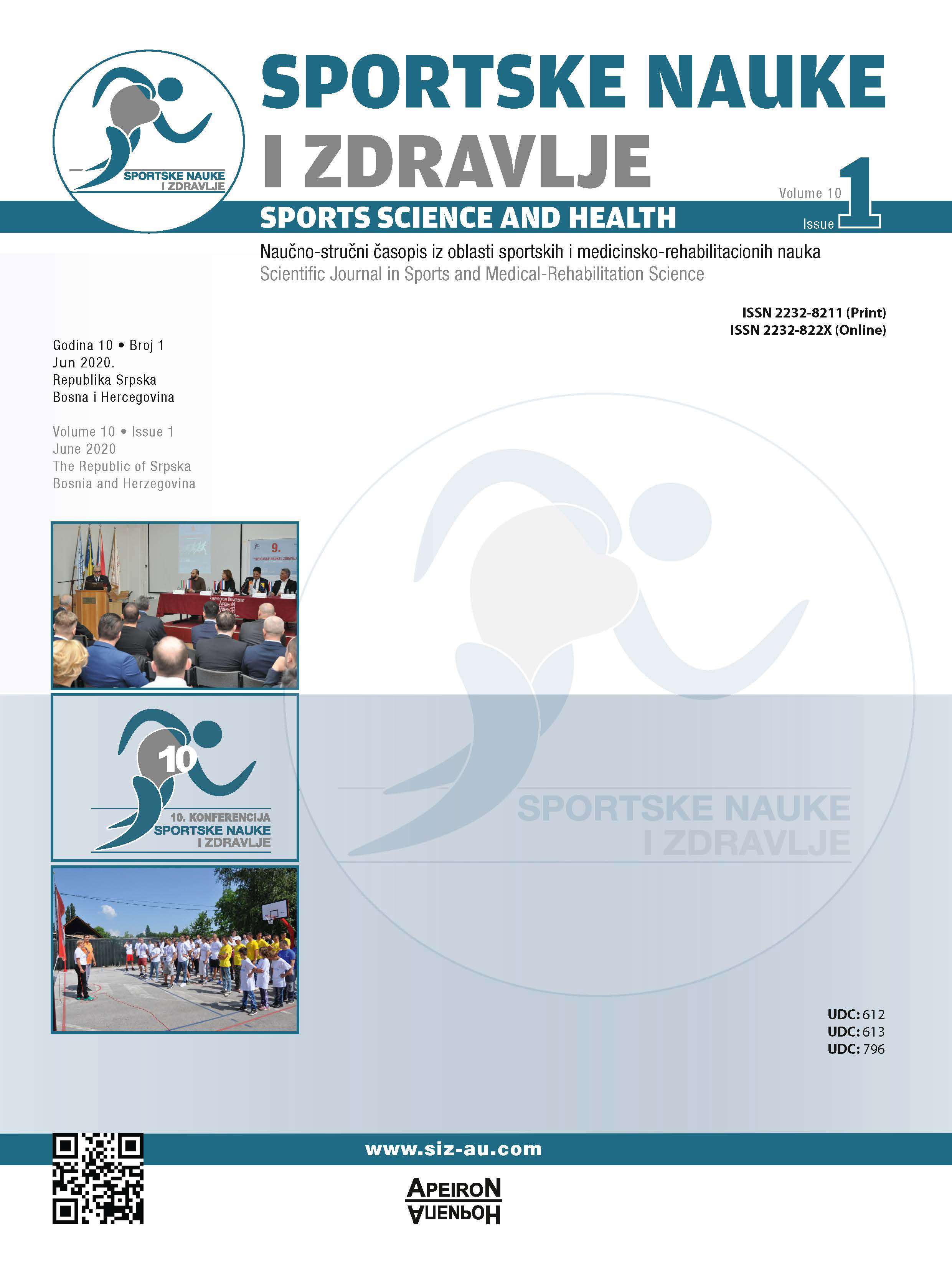The Importance of Lower Body Strength and Power for Future Success in Professional Men’s Basketball
DOI:
https://doi.org/10.7251/SSH2001010CAbstract
Heavy resistance exercise is often prescribed for collegiate basketball players to enhance game performance, but few data are available concerning the transference of lower body strength and power to the opportunity to play professionally after college. This study investigated if lower body muscular power and strength measures obtained during the barbell squat are related to future professional playing opportunities. The data was collected over a seven year period from a collegiate men’s basketball program (n=37; X±SD, age=20.0±1.4 yrs, hgt=1.98±0.09 m, bw=94.5±11.8 kg). Lower body strength was determined from 1 repetition maximum (1RM) tests of the parallel high-bar squat. Maximum lower body squat power was determined from speed squat testing across a load spectrum (30-90% 1RM) while an external tethered dynamometer or a 3-D video motion capture system quantified barbell power. Repeated measures ANOVA with Tukey’s HSD post hoc, Spearman ρ correlations, and Cohen’s D effect sizes were used to analyze the results. Subjects who subsequently played in the NBA or in professional leagues elsewhere had greater lower body strength and power. This was mainly attributed to their greater body mass, since strength and power relative to body mass was not different between the groups. Even without statistically significant differences, effect sizes consistently indicated moderate to large differences between the NBA and other professional groups when compared to those who did not play professionally. Regardless, lower body strength and power were related to post-collegiate playing opportunities, with greater values related to higher levels of professional play.
